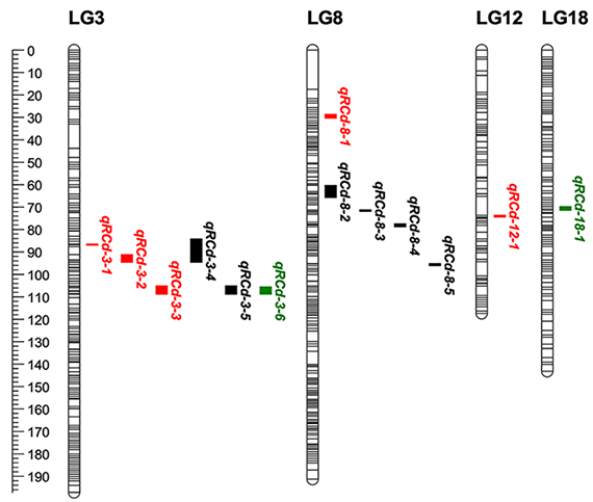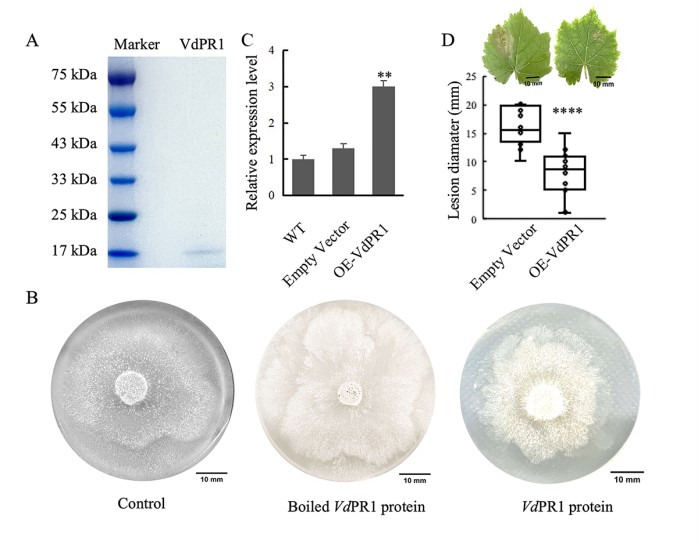Researchers in the Zhengzhou Fruit Research Institute, Chinese Academy of Agricultural Sciences have revealed genetic loci for resistance to white rot in V.davidii of wild Chinese grape and demonstrated the function of the candidate gene PR1 . Relevant results were published in Horticulture Research.
Grape white rot, a fungal disease of grapevines caused by Coniella diplodiella (Speg.) Sacc, leads to significant yield losses in grape. This study employed whole-genome resequencing (WGR) to genotype the parents of ‘Manicure Finger’ ( V.vinifera , female) and ‘0940’ ( V.davidii , male), along with F1 individuals, thereby constructing a linkage genetic map. After three years of phenotypic evaluation of the progeny for white rot resistance, one stable quantitative trait locus (QTL) for white rot resistance on chromosome 3 was confirmed (Fig.1). Based on the QTL mapping and RNA-seq results, PR1 as a candidate gene involved in white rot resistance and its function was verified (Fig.2).
This study was funded by National Key Research and Development Program of China, National Natural Science Foundation of China, China Agriculture Research System and The Agricultural Science and Technology Innovation Program. Dr. Li Peng is the first author of this work. Prof. Zhang YIng, Prof. Liu Chonghuai, and Prof. Liu Jihong serve as co-corresponding authors. The study can be accessed by the following link: https://doi.org/10.1093/hr/uhad063.

Fig.1 QTLs results in the integrated map

Fig2 Functional analysis of PR1 gene
By zhangying05@caas.cn
